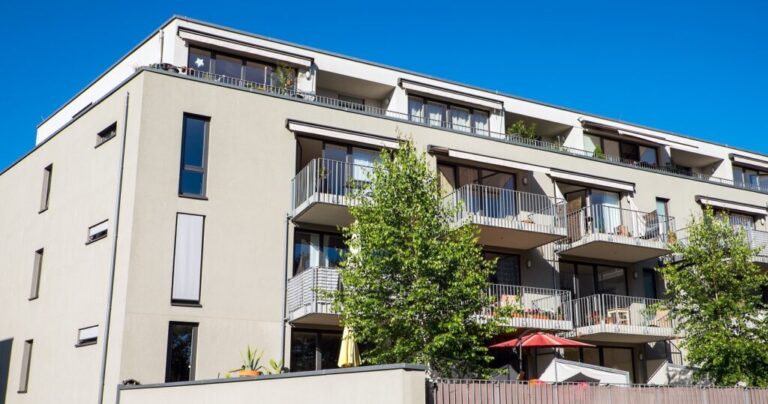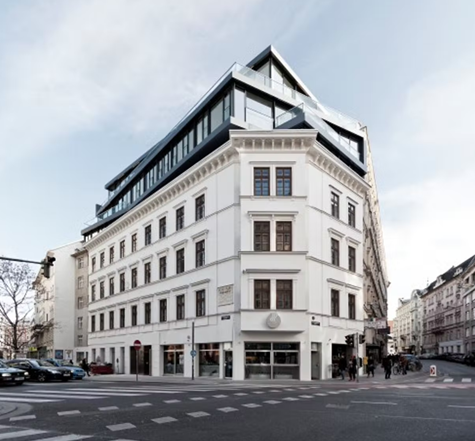
On top of it! The underestimated benefits of “topping up”.
Blog
26 July 2023
At the same time, this could provide an answer in terms of sustainability and the Energy Performance Certificate (EPC) value of buildings. In many existing buildings, the roof and/or facade will soon need to be insulated/renewed, whether mandatory or not. Now, on a topping-up project, a brand-new roof is installed, good for at least several decades. Perhaps with the proceeds from the sale of the roof space, owners can also insulate and renew the facade.
Often, the sale of the roof space can be a solution to the financial deficits of (some of) the co-owners to independently bring the building up to date.
Nothing but benefits, right?! Architectural enhancement of the street view, energy performance of the buildings, increased resale value of various units, less consumption of open space, and more.
We expect to see much more topping-up in the coming years, not only at the coast. We are already receiving more and more inquiries about it.
To be successful, based on our experience, those involved in topping-up projects will need to consider some important issues:
What is “topping up”?
Topping up is the process of building higher on an existing structure, adding a sustainable structure to an existing building. New entities are created on existing (shared) property.

Josef Weichenberger Architects, Vienna, Photos by: Erika Mayer www.erikamayer.at, Renovation and heightening Margaretenstraße
How about stability and construction damage?
The preparation of a project is even more critical in the case of topping up than in other cases. Architectural studies on load-bearing capacity/stability, etc., need to be conducted, and avoiding damage during the works to the underlying entities is a decisive factor. Often, timber frame construction is chosen, but it is certainly not always required. Topping up is, of course, subject to permit requirements.
Who has the right to build higher?
The manager of the common areas, usually the association of co-owners, has the right to build higher or to trade this right. The roof is not the property of the owner of the top floor. This right can be sold to a property developer or an interested individual, for example.
Four-fifths majority needed in the VME (association of co-owners)
There is an important preliminary process to go through with the co-owners of the base construction: they will need to agree to the topping-up with a majority of four-fifths in the general meeting of the association of co-owners.
They will first need to receive an interesting financial offer, whether in kind or not, e.g., having a new roof, a new facade, a new entrance hall, funded by the top-upper.
Moreover, they will need to be convinced that issues such as stability, potential construction damage, inconvenience or deprivation of enjoyment during the works, insurance, costs for the new deed of division, etc., are under control and correctly allocated. Making good agreements… makes good new neighbors.
The owner of the top apartment deserves some extra attention, that’s evident. They will undoubtedly experience the most inconvenience.
We know which agreements need to be made.
How about the legal approach?
The legal framework of the topping-up project also needs to be properly managed. The two most common legal options involve integration into the co-ownership with an amending deed of division or via the right of superficies.
Integration via co-ownership – amending deed of division
According to Article 577-3, paragraph 3 of the Civil Code, parts of the building, such as the roof and facade, are common to the co-owners. With integration, the newly constructed floors are included in the existing building. The land fractions will be sold to the developer. This means that an adjustment to the deed of division of the building must be made, namely a redistribution of the shares in the co-ownership. This can be done by creating new shares or by expanding the existing ones. The agreement specifies who will pay the notarial costs.
Right of superficies
Here, the new floors are built outside the existing building, so there is no integration. The shares in the co-ownership do not need to be redistributed.
Win-win-win situation
Topping up can and will contribute to a reduced footprint, the preservation of open space, a better EPC for existing buildings, in the coming years. A win-win-win for existing co-owners, the top-upper, and society as a whole.
But… everything depends on good preparation, strong negotiation with the co-owners, good and complete contractual agreements, and a solid legal framework.
DGDM’s real estate team is “on top of it!” Feel free to contact us if you have any questions.

